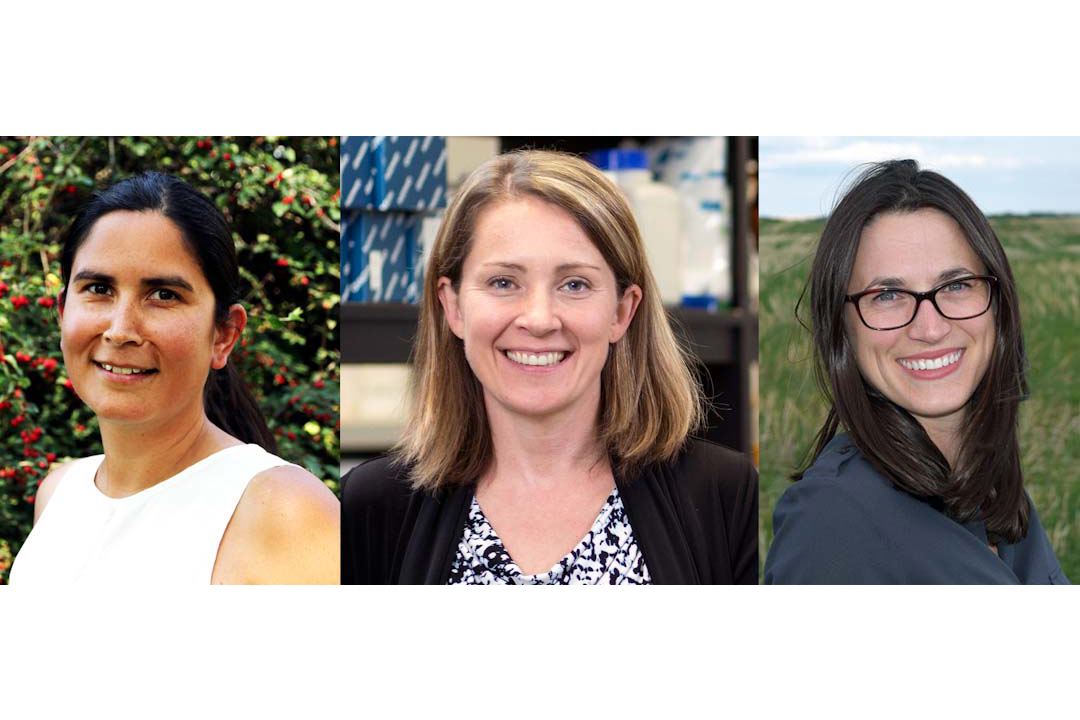
USask awarded $1.2M to advance health, agriculture and environmental research
Creating artificial substitutes for human tissue and organs, discovering the best diet to help bacteria break down oil spills, and using high-powered computing to develop next-generation materials are some of the University of Saskatchewan (USask) projects made possible by new research infrastructure funded by the Canada Foundation for Innovation (CFI).
By USask Research Profile and ImpactSeven USask research teams have been awarded more than $1.2 million from the CFI John R. Evans Leaders Fund (JELF) for labs and equipment used in leading-edge research.
“This major federal funding will advance exciting discoveries our researchers are making in areas ranging from agriculture to quantum physics,” said Vice-President Research Karen Chad. “This investment in our research capacity will pay long-term dividends for Canadians and help us retain and attract outstanding researchers.”
More than half the funding will support research into environmental sustainability and agriculture:
- Improving crop productivity by using isotopes to analyze soil. USask agriculture researchers Bobbi Helgason, Melissa Arcand and Kate Congreves will use stable isotopes (naturally occurring forms of elements) to study how plants exchange carbon and nutrients with microbes and the soil. This research will help producers use fertilizers more efficiently and soil more sustainably, leading to more productive and profitable farms and improved environmental health.
- Enriching microbe diets to better digest oil spills. USask soil science researchers Steven Siciliano and Leon Kochian will identify the fatty acids and phosphorous compounds best suited to stimulate soil microbes for munching up hydrocarbons and minimize the amount of petroleum remaining in soil after spills. Siciliano’s previous work eliminated more than 90 per cent of gasoline and diesel at six polluted sites.
- Creating alternative methods of insect management. Using new specialized, highly controlled insect research facilities, USask entomologist Sean Prager will examine how plants, insects, and microbes interact. By examining species not native or common to Canada that threaten Canadian crops, Prager will develop new methods of pest management and resistant plant varieties in advance of any need.
Other projects will support research into human health and developing new materials:
- Using super computers to simulate new materials. USask mathematics researcher Steven Rayan will use high-performance computing to simulate materials which have not yet been discovered in nature—“quantum” materials. The results will lead to new quantum computing solutions for data security, drug design, and medical imaging.
- Printing scaffolds with living cells to repair tissue/organs injuries. USask engineering researcher Daniel Chen and his collaborators will use living cells to create scaffolds—artificial substitutes for tissue and organs. The scaffolds could be used to treat injuries such as heart attacks, cartilage injuries, and tooth and bone defects, instead of relying on organ and tissue donors.
- Imaging inflammatory bowel disease with novel ultrasound microbubbles. USask biomedical researcher Steven Machtaler will develop non-invasive and inexpensive imaging tools to more effectively detect and treat inflammatory bowel disease using molecular imaging—a specialized technique which can be used to visualize specific proteins involved in the immune response. Microbubbles, about one-twentieth the width of a human hair, are an ultrasound contrast agent that can be modified to stick to markers of inflammation. Canada has one of the highest rates of inflammatory bowel disease in the world—one in 150 people are affected—and currently available tools cannot always accurately identify and monitor disease location and severity.
- Using new, automated molecular techniques to identify toxic chemicals and understand cannabinoid drugs. USask toxicology researcher Michael Wu and pharmacologist Robert Laprairie will use the same new highly specialized automated microscopy equipment for entirely separate projects: to understand how certain chemicals are toxic to humans and animals (Wu) and to analyze how cannabinoid drugs act at the molecular level (Laprairie). The results could have major implications for potential health effects of a broad range of environmental chemicals (with direct biomedical and regulatory impacts), and lead to novel drugs for conditions such as pain and epilepsy.
The CFI funds 40 per cent of the total $3 million in costs for the seven projects. The remaining 60 per cent is being sought from other public and private sources. The name of this CFI fund pays tribute to the outstanding contributions of John Evans, the first chair of the CFI’s board of directors and Order of Canada recipient.

